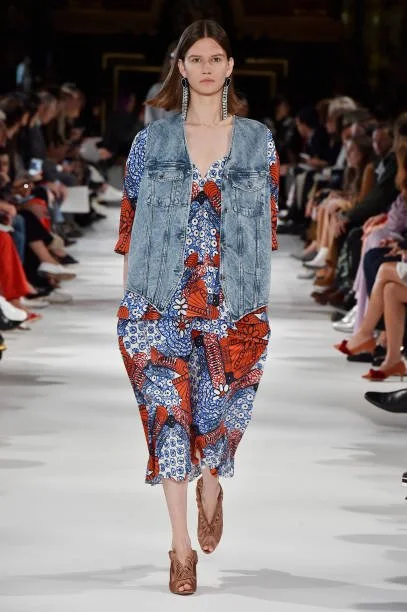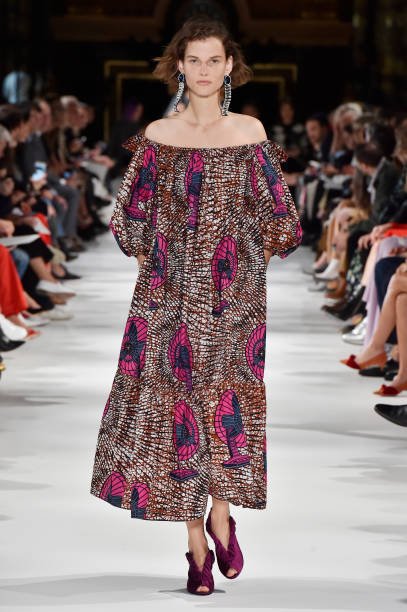African Fashion: Cultural Appropriation or Cultural Appreciation
Walk into any fashion store worldwide, and you'll see an item designed by Africans. Global recognition continues to increase daily, with various fashion brands incorporating elements from African fashion, such as Ankara prints, beaded jewelry, waist beads, braided styles, or materials, into their fashion collections.
Still, there's one big, 'not-new' but 'necessary' question that's being asked when this happens: Are the people who wear or infuse African fashion genuinely wearing it because they love it and what it stands for (appreciation) or are they just taking and using it without care of its roots and meaning (appropriation)?
Understanding Cultural Appreciation and Cultural Appropriation
Let's make this simpler.
Cultural appreciation is when the culture or tradition – food, clothing, ethics, and more – of another is respected. It means taking the time to learn, understand, and give credit where it's due.
On the other hand, cultural appropriation occurs when something from a culture – such as clothing, hairstyle, accessories, music, or traditions – is taken without understanding, acknowledging, or respecting its roots or meaning. The best way to describe appropriation is someone saying, "I see it, I like it, and I want it," regardless of who owns it, its meaning, or where it originates.
One celebrates, the other tests.
The Problem
Fashion inspiration has always drawn from various cultures around the world. Some of the most memorable fashion moments stem from this kind of cultural exchange. Like many other cultures, Africa's fashion is knee-deep in cultural meaning. Even a single color bead or piece of cloth can mean more than meets the eye.
However, the problem is that many people who wear African fashion often fail to realize that while it may look amazing, there's a significant difference between admiring it and wearing it with respect for the culture and its meaning, and simply using it without care, context, understanding, or giving credit where it's due.
An example is the 2019 fashion impersonation, design plagiarism, and uncredited imitation that happened between fashion giant Zara and South African designer Laduma Ngxokolo of Maxhosa. Zara was criticized for imitating the diamond-pattern designs created by Laduma on her socks and knitwear. Critics noted her lack of collaboration or acknowledgment and labeled it cultural copying.
Then there is Stella McCartney's Spring/Summer 2018/2019 Paris fashion show, where her collection featured various Ankara outfits. The issue wasn't because she used the prints, it was that her runway models were almost entirely white, with just ONE African model, and not a single African designer or cultural expert seemed to be involved.
That's a display of cultural appropriation. Many online critics noted that the bold printed Ankara designs were nearly identical to what African women, mothers, and aunts would wear for errands or casual gatherings. They were rebranded and sold as "fresh runway fashion."
A piece on OkayAfrica effectively captured the frustration. The writer described the collection as a kind of "fashion colonialism," pointing out how "high-priced new take on prints" looked no different from the everyday outfits sewn by local tailors across cities like Lagos, Dakar, Accra, or Dar es Salaam for less than a quarter of the cost.
It's essential to recognize that Ankara prints originated in Indonesia but were later replicated and mass-produced by the Dutch in Africa, hence their name "Dutch wax prints." In an interview to address the criticism on her collection, Stella McCartney stated, "The prints were about celebrating a unique textile craftsmanship, its culture, and highlighting its heritage. We designed the prints in collaboration with Vlisco in the Netherlands, which has been creating unique Real Dutch Wax fabrics in Holland since 1846 and helps maintain its heritage."
While what she had in mind may be right, the damage was done, especially in the fact that not one African model was on the runway to showcase her "appropriative" Ankara outfit collection.
When Does Wearing It Cross the Line?
This is where it gets tricky and where many people get it wrong.
If non-Africans wear African fashion because they genuinely appreciate the culture, understand the meaning behind the attire, and wear it respectfully, it can be a beautiful form of cultural exchange and appreciation.
But it starts to feel different when someone wears the same clothing without knowing – or caring – about its origins. When an outfit becomes a costume or just another quirky look for Instagram, or when people wear it simply because it "looks cool" or "exotic," that's when it crosses the line. The intention might not always be malicious, but the impact can still be harmful.
For example, if a white woman wears a gele to attend a Nigerian wedding she was invited to, that's not appropriation. That's inclusion, especially if she was dressed and guided by her hosts. If she also wears it because she likes the culture, the outfit, and what it stands for, that's appreciation.
Context matters. Intent matters. But impact matters more. Every outfit, material, accessory, or fashion look carries deep meaning for many Africans and people of African descent. They're tied to tribe, to ceremony, to identity. Wearing them without context can come across as careless – or worse, disrespectful - even though that was not the intention.
One aspect often overlooked is the prevalence of double standards in the fashion world. African people have been shamed and mocked for wearing African fashion, deeming it as "not fashionable on them," yet when white celebrities or models wear the same styles, they're suddenly labeled as "high fashion" or "cultural enhancement." That contradiction is what makes appropriation for African fashion so painful.
While it's a source of pride to have people from other countries and walks of life wear African fashion, the exclusion, lack of context, and reduction to a fashion moment are what hurt.
Appreciation Done Right
So, how do you appreciate African fashion without crossing the line? It's not that hard. Start by giving credit. If you're wearing a piece inspired by African design, say so. Mention and credit the designer, the culture, or the origin of the design. Do you know that a simple mention, tag, or caption in the fashion world can boost the outfit, culture, designer, and much more?
Moving Forward
We're in a time where cultural exchange is more visible than ever, thanks to social media, fashion blogs, and global platforms. The future of African fashion is undoubtedly international. But global doesn't mean rootless. African fashion should be celebrated, worn, and enjoyed beyond the continent. But that celebration needs to come with recognition and respect.


